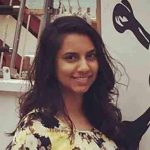Pueblo, Colorado hosts a vibrant celebration of its agricultural heritage and cultural diversity through the annual Chile & Frijoles Festival. This lively event attracts visitors from near and far, offering a unique blend of culinary delights, live entertainment, and immersive experiences.
In This Article
TL;DR
- The Chile & Frijoles Festival celebrates Pueblo's rich agricultural traditions and Latino/Hispanic culture.
- Visitors can explore downtown Pueblo, indulge in local cuisine, witness cooking competitions, and enjoy live entertainment like folklórico dancers and mariachi music.
- The festival showcases Pueblo's historical landmarks, scenic byways, and opportunities for adventure and exploration.
Destination Overview
The Chile & Frijoles Festival in Pueblo, Colorado, stands out as a captivating tourist destination, renowned for its authentic celebration of local agriculture and cultural heritage. This annual event offers a unique opportunity to immerse oneself in the vibrant traditions of the region, from savoring locally-grown chiles and frijoles to witnessing the colorful fusion of Latino and Hispanic influences.
Local Experiences and Culture
Attending the Chile & Frijoles Festival is a gateway to experiencing Pueblo’s rich local culture. Visitors can explore the vibrant arts and crafts scene, savor the flavors of authentic regional cuisine, and witness traditional cultural events that showcase the region’s diversity. Interacting with the warm and welcoming local community is integral to the festival experience, fostering a deeper appreciation for Pueblo’s cultural tapestry.
Agricultural Heritage
Agriculture plays a pivotal role in shaping Pueblo’s identity, and the Chile & Frijoles Festival is a testament to this deep-rooted connection. Farm stands and agricultural exhibits take center stage, highlighting the region’s bountiful harvests and sustainable farming practices. The festival’s themes and activities pay homage to Pueblo’s agricultural heritage, celebrating local farmers’ and growers’ hard work and dedication.
Culinary Exploration
Foodies and culinary enthusiasts will find themselves in paradise at the Chile & Frijoles Festival. Specialty shops offer a tempting array of locally-sourced products, from freshly roasted chiles to handcrafted salsas and sauces. Cooking competitions showcase the talents of local chefs, while culinary demonstrations provide visitors with valuable insights into the art of preparing traditional dishes.
Entertainment and Activities
The Chile & Frijoles Festival is a vibrant celebration of life, with live entertainment and activities that captivate visitors of all ages. From lively music performances to mesmerizing folklórico dances, the festival’s entertainment lineup is a feast for the senses. Street vendors add to the festive atmosphere, offering unique handcrafted items, souvenirs, and delectable street food.
Historical and Cultural Landmarks
Pueblo’s rich history and cultural heritage are woven into the fabric of the Chile & Frijoles Festival. Union Avenue, a historic district, serves as the festival’s backdrop, while the Arkansas River and Pueblo Community College provide picturesque settings for various events and activities. Heritage tours allow visitors to delve deeper into Pueblo’s storied past, uncovering the city’s role as the “Gateway to the Southwest.”
Celebrating Diversity
The Chile & Frijoles Festival celebrates diversity, with a particular emphasis on honoring Latino and Hispanic cultures. Folklórico dancers grace the stages with their vibrant costumes and intricate choreography while the rhythmic melodies of mariachi music fill the air. Traditional Mexican food stalls offer a tempting array of authentic dishes, allowing visitors to savor the flavors of these rich culinary traditions.
Adventure and Exploration
For those seeking adventure and exploration, the Chile & Frijoles Festival serves as a launchpad for discovering the region’s natural wonders and scenic byways. The Frontier Pathways Scenic Byways offer breathtaking vistas and opportunities for outdoor recreation. At the same time, heritage tours like the Cowboy to Castles and Pueblo Legacy Tour provide insights into the area’s captivating history and stunning landscapes.
FAQ
What makes the Chile & Frijoles Festival unique?
The festival celebrates Pueblo’s agricultural heritage, particularly its renowned chiles and frijoles while showcasing the region’s rich Latino and Hispanic cultural influences through food, music, dance, and traditions.
What types of entertainment can visitors expect at the festival?
Live music performances, folklórico dance shows, mariachi bands, and street performers create a lively and vibrant atmosphere throughout the festival grounds.
How can visitors learn about Pueblo’s history and culture during the festival?
Heritage tours, such as the Cowboy to Castles and Pueblo Legacy Tour, offer guided explorations of the city’s historical landmarks and cultural sites, providing valuable insights into Pueblo’s past and present.
Are there opportunities for outdoor adventures during the festival?
Absolutely! The Frontier Pathways Scenic Byways offer scenic drives and hiking trails, allowing visitors to experience the region’s natural beauty. Additionally, the Arkansas River provides opportunities for water-based activities like rafting and kayaking.
What culinary experiences can visitors look forward to?
The festival features cooking competitions showcasing local chefs’ talents, culinary demonstrations teaching traditional recipes, and specialty shops offering locally sourced products like chiles, salsas, and handcrafted goods. Street food vendors also offer a diverse array of delectable treats.







